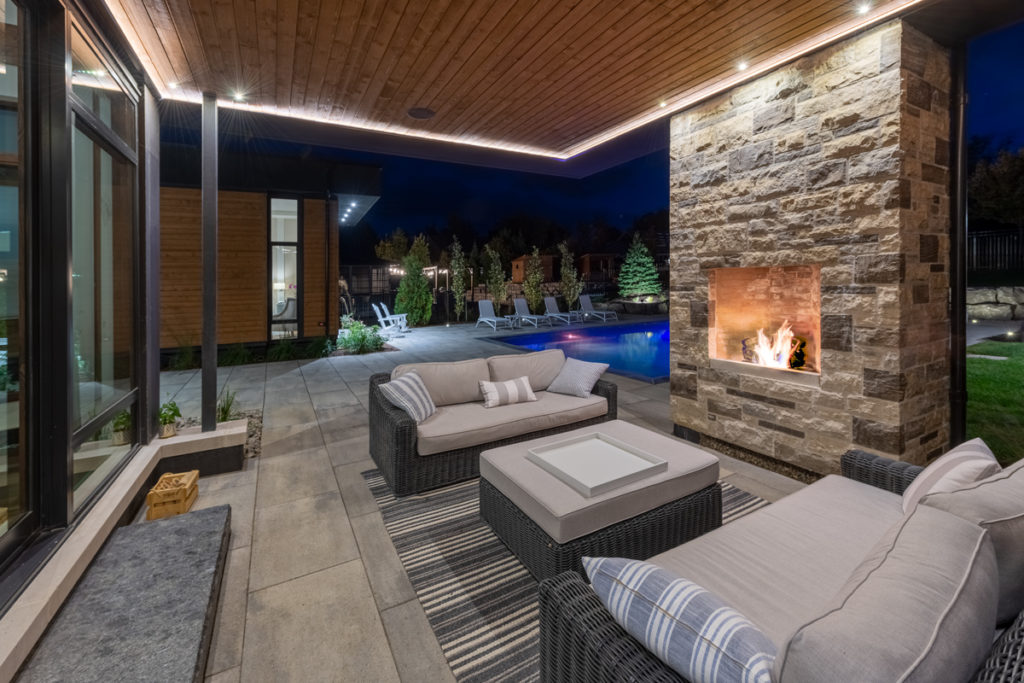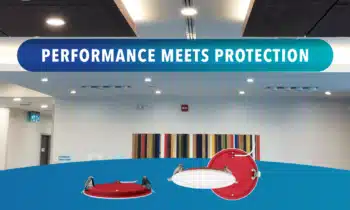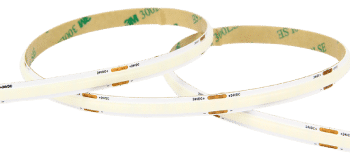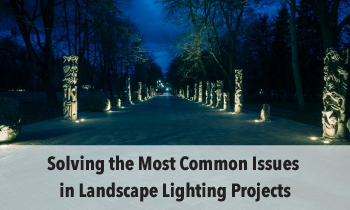With the pandemic, outdoor spaces have become a premium across Canada. We spoke with lighting design consultant, Ellen Godson LC, IES on the things to consider when lighting your outdoor space.
ML: Ellen, in your work at Lightspec Canada as a Lighting Designer, you’re exposed to many innovative residential lighting installations. What trends do you see when it comes to outdoor lighting?
EG: A trend that started a couple of years ago, and now with the pandemic, everyone is looking to expand their home environments. A significant way of achieving this expansion is to utilize their outdoor space. So now you’re going to be seeing that people are highlighting the depths of their gardens, maybe not just a patio, but they’re extending beyond their front and back porch. We also see more outdoor kitchens, fireplaces, spa like areas and of course the hot ticket item, pools!
ML: How is that changing outdoor lighting solutions?
EG: With more people socializing in their outdoor spaces, the usage has extended beyond daylit hours, into the night as well. That outdoor space is multi-tasking and therefore you need to be able to provide lighting solutions that are able to change and provide the mood and theme that you wish in that area. Whether it is a relaxing, romantic or party theme, we see a lot of colour in our light sources being used in these spaces. It isn’t just a soft white light anymore you have a lot more options from a rainbow of colour to a static colour or even a range of white light. With all these options and the ability to change your mood and setting you need to be aware of the necessity of controls. Controls are a part of the lighting solution, enabling you to change those themes and also take into consideration your neighbours – who may also be enjoying their outdoor space and to avoid inhibiting the natural environment’s ability to thrive.
ML: What kind of lighting should you be looking to integrate into your outdoor space?
EG: It depends on what type of space you have and what your objective is for the space. If you’re objective is to highlight a garden area, you may wish to consider some “in-grounds” to highlight specific areas. The LED Disc Light or Mini Disc in 2700K series are great for accenting areas through, say, uplighting trees or bushes, grazing a stone retaining wall , highlighting a gazebo or marking a pathway.
Or you can integrate more architectural lighting higher off the ground, like bollards, or even pole lights, in your backyard for a more decorative effect.
Highlighting a tree at the bottom of your garden or back yard is going to give your backyard more perceived depth.
If you’ve got an outdoor kitchen or barbecue, you need to start thinking about task lighting so you can see what you’re cooking in your pizza oven or BBQ! Now, I’m incorporating lighting into the cabana or pergola structure so you have ambient lighting and task lighting.
Across the country, outdoor fireplaces were selling out. You want to integrate directional lighting that makes that outdoor fireplace an inviting space to get to – especially if you have a big backyard and the fireplace is further down the garden. Conversely, if it’s going to be on your deck, where we have ours, how will we highlight the space so it sets the mood, gives it a bit of magic and maybe some twinkle right, a bit of a wow factor.

ML: What’s an easy way to create that magic?
EG: Neon Flex is great for this because it’s bendable so that you can put it anywhere. You can put it around your pool area. You can put it going down your stairs. You could put it around a tree. You can hide the rope light in a cove, ledge or coping and just see the effect of light reflecting or you can visually see the rope as a feature. You have the option to bring in colour or just different shades of white.
The key to creating magic is not to be obtrusive and flood your whole space. Instead, you’re using lighting to accent areas, so it sort of catches your eye. I always say to everyone; we’re like bugs. We’re attracted to light. You don’t want people just to see a flood of space; you want to point people in a specific direction and catch their eye with the light.
Whenever you talk about lighting, you have to think about what’s the task, what’s the safety feature. Those are always sort of the givens. And then it’s like, “Okay, well, what else do we want to highlight? How do we want to create the magic?”
ML: What are the most common mistakes you see when lighting an outdoor space?
EG: I think the most common mistake is that people don’t understand you have to control it, or it’s too bright, or they don’t like its colour because LEDs are so blue.
You’ve got to think about the moods that you want to create. It used to be you’d just stick a floodlight on your wall on the exterior, and you’d flood your backyard. Typically, that was because your only concern was whether someone was going to walk into your backyard and you’d be able to see them. It was more of a security thing than anything else. Now it’s all about creating that oasis.
ML: I think a lot of us are in the dark about in terms of how to control lighting
EG: There’s so much you can choose from now for controls. I mean, you can use a simple on/off switch, a time clock, a wall mounted system that provides different scenes, or an app on your phone.
So, the question becomes how techy do you want to be? Or do you want to have a system that you never worry about? The main thing to remember is that it’s not good for the environment to have light shooting up into the sky, or being on all night. You need to make sure that you’re aware of your surrounding environment – not just your own.
ML: The key is that your lighting isn’t just about you…
EG: Exactly. It’s also about the animals, birds, trees and plants. Plants need to sleep, so you can’t be shining lights on them all night long.
ML: And then there are the bugs!
EG: Understanding lighting can help you control bugs because it’s the light’s wavelength that attracts them. So if you have a bluey, white light, then oh my gosh, they’re so much more attracted to that white light than they are to that amber light. Have you noticed those mosquito zappers are a bluey colour?
So if you’re in an area with lots of mosquitoes, you may wish to try a more yellow light.
ML: Lighting an outdoor space really is a combination of art and science.
EG: Exactly. Everyone assumes: “Oh if I throw more light at it, it’s going to be better.” But, much like bugs, human beings are attracted to light. So with outdoor lighting, you want to attract people using a flow pattern to navigate certain areas. Maybe you don’t want them going into your flower gardens with your petunias, but you want them to be walking somewhere else. So you can use products like the LED Brick and Step Star Gen II Series in 3000K to help with flow patterns or pointing people in specific directions. Like an artist painting an image on a canvas, you can use light to create focal points that direct people to specific locations and direct influence their mood.
But it’s also a science because you want to be sure that it’s not too bright. You’re not providing a negative effect to the environment and you are controlling it. Conserving energy is always a consideration in design and with the new LED sources this really helped in that avenue. In the beginning the LED’s we were seeing being used on the exterior were around 6,500 Kelvin (very bluey white), that made the spaces turn spooky. When you think about moonlight, that’s around 4,000 Kelvin. A candle is more like 2,000 Kelvin. So the aim for our outdoor environments is to be closer to that 3000 to 4,000 Kelvin range.
That’s the trend we’re seeing: that bluey, white light is going the way of the Dodo bird, and now we’re shifting into more of the warmer colour Kelvin temperatures again, like our old incandescent light, with LED’s that will also help conserve energy.
To learn more about how Magic Lite’s lighting solutions can help illuminate your next project, please feel free to contact your local Sales Agent or a member of our Customer Care team.


